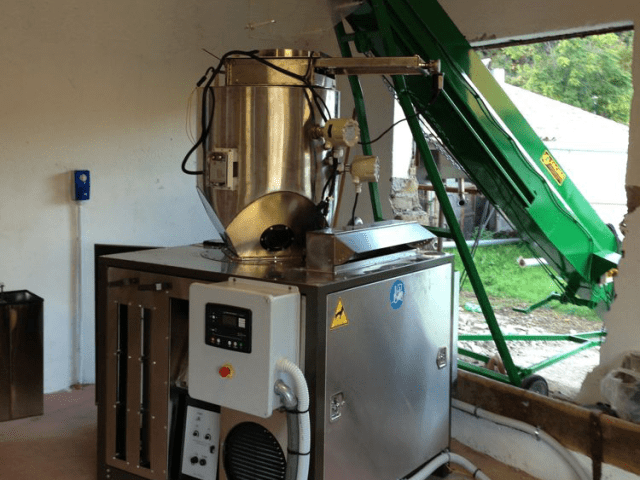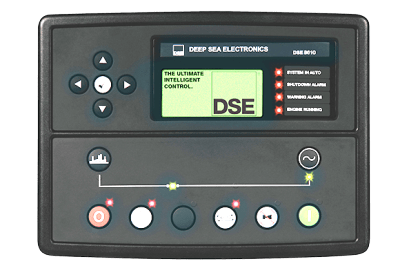Now you can take advantage of feed-in tariffs for biomass-based energy generation, or simply charge the ultimate batteries (aka: the grid). The system will work with nearly all global grid standards, as well as enable off-grid parallel feeding with large gensets already at your facility.
In March 2013, APL announced the availability as an option a grid-tie and generator paralleling solution for the 20kW Power Pallet. This plug-n-play, fully integrated, and equipment-certified solution is now offered as standard equipment on our new PP30 P25kW Power Pallets and PowerTainers.
We think this tie solution is a game changer for the broad usability of the Power Pallet. For years many of you have told us the Power Pallet won’t be relevant for your location until it will connect either to the main grid, or an already existing local diesel grid at your site. Now we can do both.
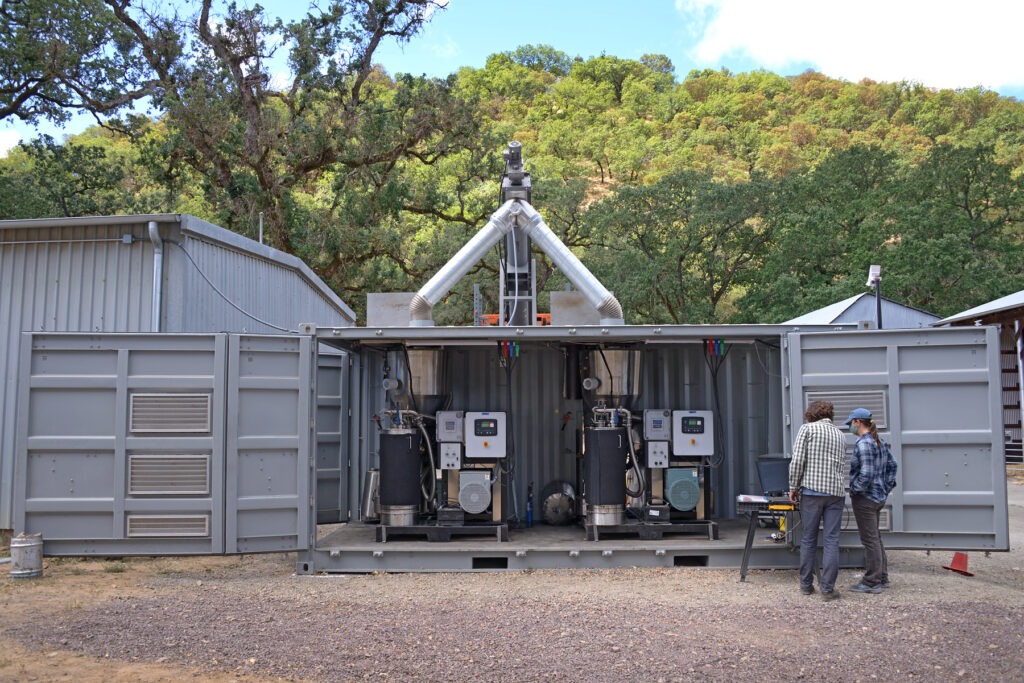
UC’s Hopland Research & Extension Center – May 2021
One of the first of our new containerized 50 kW systems was installed and commissioned at the UC’s Hopland Research & Extension Center (HREC). The system will be operated by APL and HREC personnel in partnership with the Mendocino County’s Resource Conservation District (MCRCD) who will be supplying the feedstock from their forest management program. This pilot project was funded by Calfire as part of their Forest Health Program and includes plans to increase capacity.
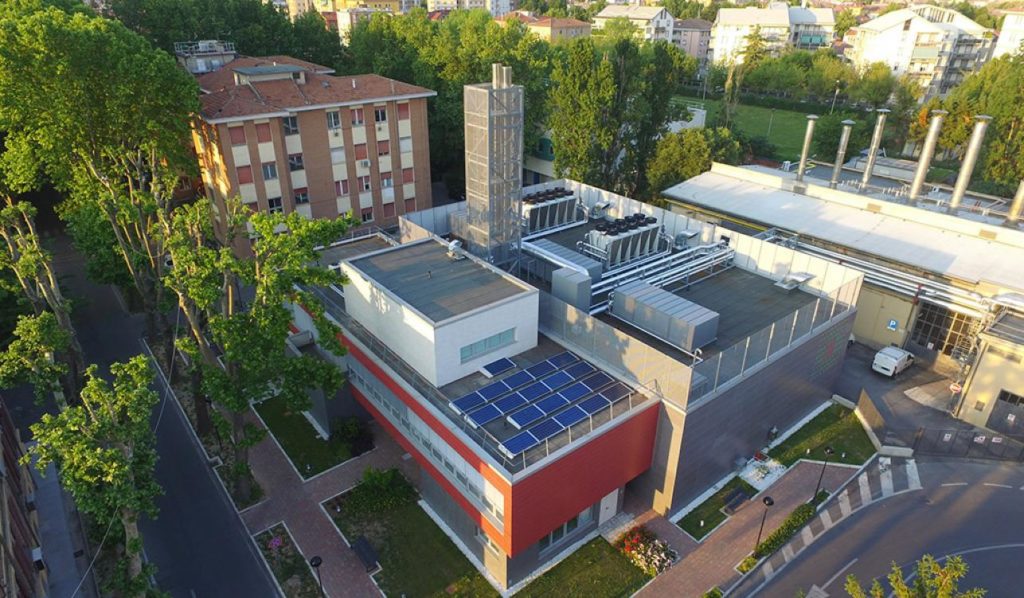
Siram, Parma, Italy – November 2019
APL provided a new PP30 to the Siram Group. Siram S.P.A. provides energy management services. The company offers utilities and industrial fluids management, operation of urban heating, and air-conditioning networks. Siram serves customers throughout Italy. Their expertise in heating and cooling makes their integration of a PP30 with its standard Combined Heat and Power system a particularly good match. We look forward to their help in deploying APL systems within the feed-in tariff markets in Europe.
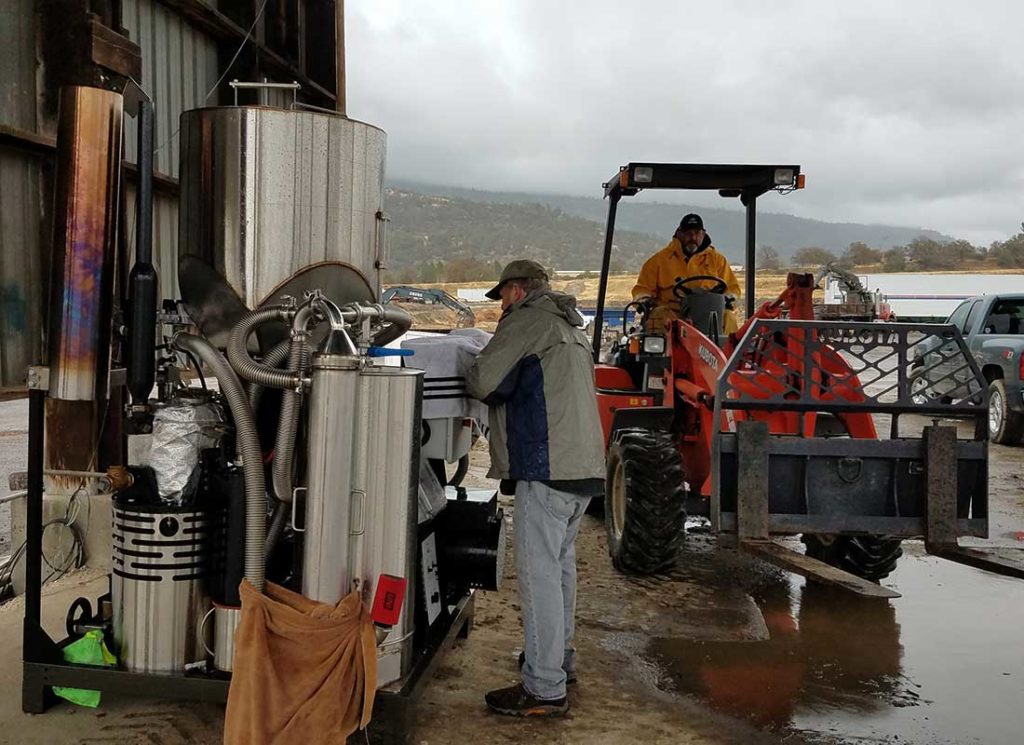
Sierra Resource Conservation District – June 2019
The Sierra Resource Conservation District (SRCD) had us install a PP20 in foothills of the Sierra Nevada where they are the entity responsible for managing and protecting more than 3000 square miles of forest and oak savannah found there and in the Central Valley. SRCD operates the gasifier in wooded areas that have experienced wildland fire and insect infestations to demonstrate the PP20’s capacity to reduce forest fuel loads and wildfire risk while sequestering carbon and generating on-demand electricity. These activities are part of SRCD’s recently launched Carbon Management Program that aims to understand and manage the carbon cycle for both ecological and economical benefit. APL and SRDC were awarded funding for these activities by the California Department of Forestry and Fire Protection’s Greenhouse Gas Reduction Fund.
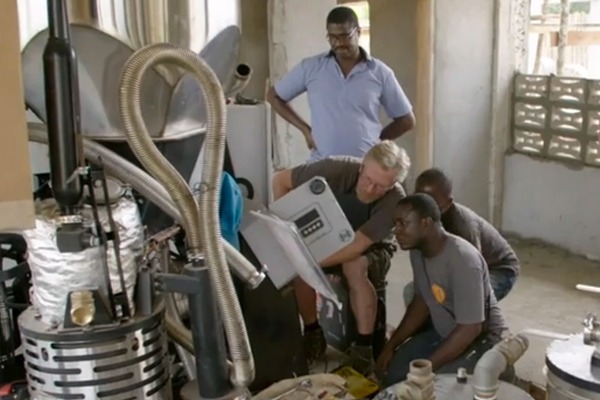
Kwendin, Liberia – December 2016
Kwendin is a remote village in Nimba County in central Liberia. It has a population of about 2000 inhabitants, and no access to the very limited national electrical grid. With funding from a USAID grant, APL, in partnership with Stable Outcomes are building a microgrid to supply electrical power to about 250 homes, public schools, churches and small businesses. Three PP20 Power Pallets are energizing the village’s new and comprehensive microgrid which will also provide street lighting. This is an exciting project which builds on our BWI REC project and expands our commitment to addressing global energy poverty.
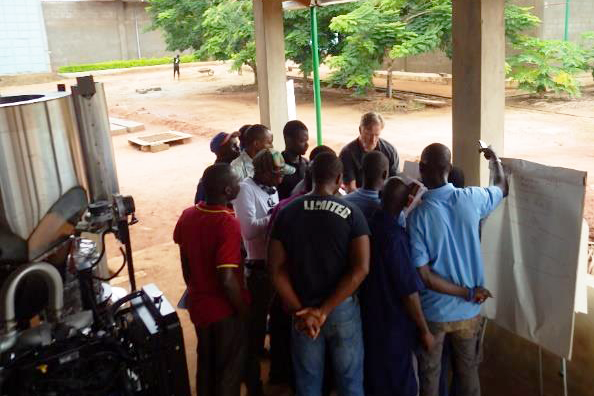
Songhai Centre, Benin, West Africa – May 2015
Their first Power Pallet was installed at the Centre Songhai, which will eventually be operating four PP20 Power Pallets at their headquarters at Porto-Novo in the Republic of Benin. In addition to their work with biomass gasification, Songhai is focused on sustainable agriculture as well as microenterprise and IT for rural communities. The center trains young Africans to become responsible citizens in their communities; supplying knowledge and expertise in a variety of sustainable technologies and practices. The facility integrates a large variety of power generation equipment as well as diverse agricultural techniques. We look forward to making the Songhai Centre a regional locus for the demonstration and development of our technology.
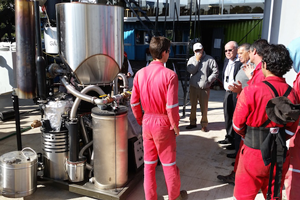
G2E, col. Santa Catarina, Coyoacán, Mexico D.F. – Jul. 2015
Green to Energy (G2E) is a renewable energy company located in Mexico City that specializes in gasification for energy production. They have added one of our PP20s to their demonstration center, which features a wide range of solutions for biomass energy, all the way from our portable 20 kW unit to small-town sized 2.2 MW systems. They share the same goals as APL: to help make energy from waste through gasification available to everyone. APL is excited by this new partnership with our neighbors in Mexico.
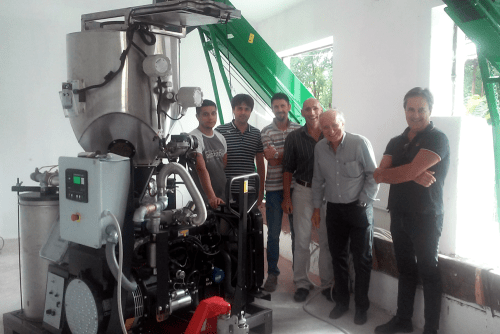
Hybridnet Project, Terni, Italy – Aug. 2015
The Hybridnet Project has assembled a team of young engineers devoted to building an alternative energy training center where they can help North and Central African refugees learn about sustainable development. The goal is to for them to create economically and environmentally sustainable local enterprises in their home countries, allowing them to make a living while providing a useful and environmentally friendly service to their communities. This goal matches well with APL’s mission, and we want to help them succeed in any way we can.
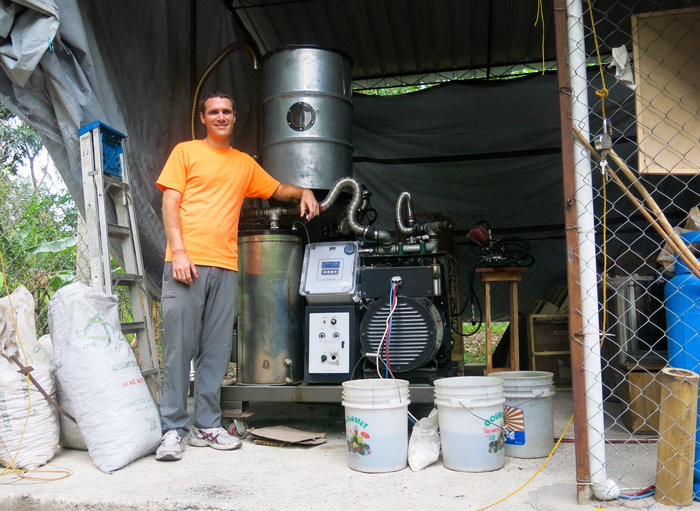
Limyè Pa w, Tuffet, Haiti – Feb. 2015
Operating as a socially committed private enterprise, Limyè Pa w has been making and distributing renewable, low-carbon power in Haiti since the beginning of 2015. Running their upgraded v5 PP20 on plentiful local corncobs, they currently operate 10 hours a day, six days a week, serving dozens of rural households. In Haitian Creole, Limyè Pa w translates to ‘Your Light’ – a reference not only to light as one of the most important uses of electricity, but also how their service can lead to many more powerful benefits for their customers’ families and communities. Working in Haiti since 2013, they launched their rural electrification pilot early 2015 using Lumeter mini-grid meters to monitor and bill for customer usage. They have also installed an LPG dual-fuel system to allow increased grid uptime and reliability.
The road to here has explored many grid-tie options, and found most all of them less than ideal. Here’s the handicapping of the main scenarios:
1. An inverter based grid tie, using solar or wind equipment, is in principle easy, but for a 20kw system the inverter alone is @$10,000. You still need to rectify the AC to DC, and more importantly you still need to smart control the genset governor to set power levels and error driven engine shut downs. Also, the combination of inverter and rectifier is going to consume about 10-12% of your power. Ok, you can use a PM DC genhead, if you can find one (and ouch on the price) but you still have 5-8% inverter losses.
2. A synchronous (inductive) genhead is easy to sync as a DIY option, as the grid is energizing the fields, thus sync is native. However, proper async genheads are double the cost of standard genheads, and you still need to add all the genset power controls and protective features. This equipment is mostly only built for large scale systems, and at related price points. Also, asynchronous genheads are usually about 3-5% less efficient than synch ones, and moreso if you are repurposing an inductive motor as a generator.
3. A sync system for a standard synchronous (auto-exciting) genhead is the typical path, and most efficient path, for grid tie of spinning generating media. However most equipment is made for industrial or utility scale systems, and priced accordingly. To date there been little driver to make this equipment value optimized for the under 100kw market, like there has been for residential scale solar. Furthermore, the equipment has historically been offered as separate control boxes for the different functions: sync control, voltage control, governor control for power level set, and protective functions. When putting all these pieces together I’ve always ended up with prices in the $15-20k range.
What changed recently on our end was finding new all function integrated genset controller and sync systems that are reasonably priced. In our new world of “electronics always tend towards free”, what was previously complicated multi box systems, are now getting packaged into simple multi function blocks, with nice software and push button interfaces. And certified out of the box!
Multiple providers now have interesting options in this space. We reviewed the offerings from Deif, ComAp, Deep Sea, Gov Corp of America, Besler, Woodward, Beckwith, Minco, Heinzmann, etc etc and found the best balance of factors in the Deep Sea Equipment. We chose Deep Sea as it provided not only the most attractive solution for the current grid tie issue, but also has a full line of expansion equipment for future needs like remote monitoring and multiple unit paralleling.
Our solution, which is now standard equipment on all PP30s, is based on the Deep Sea Electronics 8610 module. We’ve mounted this unit in a custom genhead dog house, and added the needed smart mains contactor, current sensor coils, and interface with our woodward governor and Power Pallet PCU controls. Sadly the solution is not as simple as just an add-on box to the mains out, as you need to control the genset governor, voltage regulator, and integrate start up and error shut down states across the gasifier and engine control systems. This means a full integration down into the bowels of the Power Pallet control system.
Nonetheless, the outcome we’ve achieved is a full and complete onboard solution. This includes gen-to-grid sync, grid feed level control, gen-to-grid voltage matching, grid and gen protective functions, and onboard master contactor for connect and disconnect. All that is left is to run wire from the onboard Power Pallet contactor to your breaker panel on site.
A critical feature of this solution is the elimination of the usual engineering project for the smart mains contactor on the install end. This can be a non-trivial problem, usually found as an after thought in the project. Most grid tie gensets leave this to the installer, which not only requires a smart contactor, but also lots of control wire and current sensors run back and forth between the panel and the generating equipment. Each installation is custom, so an electrical engineer and drawings will be required, in addition to the equipment and install costs. In the process the local code agent is sure to get shaky as they’ve never seen anything like what you’re doing. This problem consumed 10s of thousands of dollars in the 100kW Powertainer project at University of Minnesota, and we still don’t have it correct. Thus here we’ve been highly motivated to solve it all onboard, and relieve you of simliar messes in the future.
The Deep Sea unit is CE-certified. The Meccalte genhead is similarly certified. However, the Power Pallet itself is yet to be certified (we’re working on this), but to date we’ve typical found exemptions for experimental or emerging equipment. You need to assess what is likely ok / not ok in your particular location. So far, creativity is working for early and one off installs.
Click here to contact us if you’d like more information.


